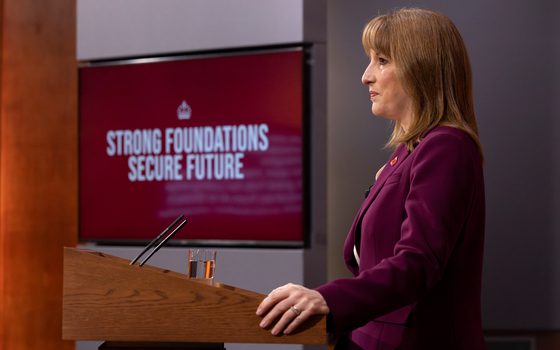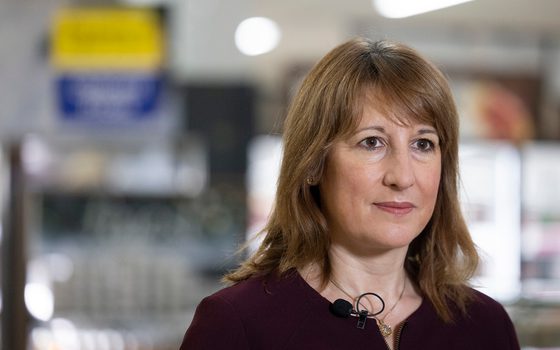Reducing the stealth subsidy to banks
The banking sector is set to receive over £200bn from the Bank of England. Tiering reserves could save the public finances billions.
22 September 2023
While the state has to deal with more expensive public finances and households struggle with a cost of living crisis, the banking sector is set to receive over £211bn in interest payments between December 2021 and July 2028. This is far more than we need to pay for monetary policy to work and is the result of an innocuous change to the design of the monetary policy toolkit in 2009 starting to pay interest on all bank reserves held at the Bank of England. We propose reforms to the monetary system that stop these stealth subsidies to banks and in turn reduce the cost to government.
As noted by former deputy governor of the Bank of England, Sir Paul Tucker, “The current predicament was not unavoidable”. The European Central Bank recently chose to cease paying interest on minimum reserves to reduce these payments to banks. The Bank of England could similarly introduce a system of tiered reserves – saving the public purse between 1.5bn and 13.4bn year.
Transitioning to such a framework would save the taxpayer money but is not the only way to limit unnecessary transfers to banks. Alternatives, such as a windfall taxes on banks or other financial regulations certainly also warrant consideration.
Between 2024 and 2028 there will be £34bn a year in income transfers to an already heavily subsidized banking sector. This is equivalent to 2.8% of government spending. Conventional government expenditure decisions goes through a significant democratic process of checks and balances and public scrutiny. That is not the case here. The purpose of this analysis is to show the scale of this problem and offer alternatives systems that can ease the issue.
The Macroeconomic Setting
Following the 2008 global financial crisis, economic activity stagnated with low demand and declining inflation rates. In response the Bank of England initiated its quantitative easing (QE) program, where money was created to buy government bonds. The aim was to boost aggregate demand, rejuvenate the economy and fend off seemingly dangerous low levels of inflation, by 2021 this had resulted in £875bn of new money being created to purchase these bonds.
This new money was in the form of central bank reserves — meaning it was directly added to the balances that the banking sector had with the Bank of England. This diminished the need for commercial banks to borrow reserves at the official Bank rate to meet their payments to their customers due to the abundance banks now found themselves with. To retain control over interest rates the Bank implemented a ‘floor system’ where all central bank reserves are compensated at the policy rate which is set by the Bank. This system, with abundant central bank reserves, ensures the interbank rate (and market credit conditions more broadly) follows ‘the floor rate’. Paying interest on these reserves is said to set a minimum floor, as banks wouldn’t lend to others (and give up reserves) below this rate and miss the opportunity of a higher profit margin.
Such interest payments were meant to be funded by the proceeds from the bonds the Bank had just bought. As the official Bank rate was lowered to near zero the expense of interest on central bank reserves was minimal. The Bank was paying much less in interest to the banking sector than it was receiving from the QE-bought bonds. At the time, this was advantageous to the government as any difference was refunded to the Treasury – effectively reducing government borrowing costs by 1% of GDP. Indeed, as we have previously shown, up to 2022 the Bank made a profit exceeding £120bn which was given back to the Treasury.
Our calculations suggested that as long as the Bank’s official interest rate did not surpass roughly 2% (the average bond rate at the time) the Bank would be able to remunerate the banking sector without incurring any losses. When the Bank’s official rate rose above the average interest rate for bonds held by the Bank, however, then the difference would be a loss. The Treasury is liable for the Bank’s QE operations, meaning it’s the government who would have to foot the bill for any losses.
The decision to pay interest on reserves has now created linkages between the central bank, the government and the banking sector that were historically absent. Now when the Bank changes its official interest rate this has a direct and immediate effect on government interest expenditure and the earnings potential of the banking sector. Such implications for monetary policy will now end up costing us tens of billions.
From December 2021, when the Bank first began raising the official rate to the present date, the Bank has made £52.6bn in income transfers to the banking sector. Compared to recent government statistics, this amounts to roughly 25% of the government’s debt servicing costs.
Based on the Bank’s most recent analysis of market forecasts of interest rates, which offers a monthly forecast of the Bank’s official interest rate for the next 5 years, an indication of the future income transfers to the banking sector can be estimated. According to the Bank, interest rates are expected to remain above 5% until March 2027, when it begins to slowly decline to about 4.7% by July 2028. Assuming the Bank unwinds its QE holdings as planned and actively sells £20bn of gilts a year, the Bank would have transferred £211bn to the banking sector since December 2021 – as shown in figure 1.
Fig 1: Banking sector set to receive over £200bn from the Bank of England
The Policy Setting
This extra money for banks isn’t the result of them providing more services to customers, it is essentially a financial windfall from current monetary policy arrangements. Prior to the 2008 financial crisis, the Bank did not pay interest on all the reserves held for banks — the present monetary framework is an exception, not the historic norm.
An alternate policy approach, known as ‘tiered reserves’, has been adopted by the European Central Bank. This system helps reduce how the central bank’s interest rate impacts government interest expenditure and banking sector earnings.
The Bank of England could follow the European Central Bank and stop paying interest on a portion of minimally required central bank reserves. According to the ECB, this policy reform is intended to make policy more efficient, reduce the amount it pays out in interest, and decrease the amount of potential financial losses it would incur.
Minimum reserve requirements are financial regulations that force banks to hold a certain proportion of central bank reserves against the deposits of their customers. The ECB requires its regulated banks maintain a minimum reserve requirement of 1% with their national central bank – averaging a total of €165bn — saving the ECB will save around €6 billion a year. The added benefit of reserve requirements is that they can be used to tighten monetary policy alongside raising interest rates. Unsurprisingly, the ECB’s monetary policy committee is considering raising the reserve requirement further to dampen inflation.
Currently there is no compulsory reserve requirement in place in the UK, but there have been in the past — a reserve requirement of 12.5% existed in 1971.
A tiered system in the UK could work as follows. Reserve requirements would be implemented that require banks to hold a certain portion of their liquid assets in central bank reserves. These reserves would be compulsory, banks would not be able to exchange these reserves unless they changed their amount of liquid assets. These reserve requirements would not be paid interest and any reserves above the requirement still would, creating a tiered system for interest paid.
Requiring commercial banks to hold 1% of their liquid assets in reserves that pay no interest would save £1.5bn a year, a reserve ratio of 2.5% would save £3.8bn a year and a reserve ratio of 5% would save £7.7bn a year – as shown in Fig 2. Such reserve ratios are common across the world, including in Switzerland (2.5%), Singapore (3%) and China (5 – 9.5%). If the Bank was to gradually introduce a reserve ratio of 10%, lower than Brazil (21%) and UK levels in 1971 (12.5%), it would limit income transfers to the banking sector and save the government £64bn over five years. This latter figure would be equivalent to 9% of the government’s debt servicing costs – as detailed in Fig 3.
Fig 2: Transfer to banks in next 5 years could be reduced by £64bn by tiering reserves
Fig 3: Amount of money transferred to banks is a significant portion of debt costs and GDP
Transfer to banks per financial year where required reserves are not paid interest, in £bns, as a % of government borrowing costs and as a % of Gross Domestic Product.
No Reserve Requirements |
2.5% Reserve Requirements |
10% Reserve requirements |
|||||||
£bn |
% borrowing costs |
% GDP |
£bn |
% borrowing costs |
% GDP |
£bn |
% borrowing costs |
% GDP |
|
2022 – 23 |
£ 21.5 |
18.7% |
0.9% |
£ 21.5 |
18.7% |
0.9% |
£ 21.5 |
18.7% |
0.9% |
2023 – 24 |
£ 43.5 |
46.3% |
1.7% |
£ 41.4 |
44.1% |
1.6% |
£ 35.2 |
37.5% |
1.4% |
2024 – 25 |
£ 43.5 |
56.3% |
1.6% |
£ 39.3 |
50.8% |
1.5% |
£ 26.7 |
34.6% |
1.0% |
2025 – 26 |
£ 36.5 |
47.5% |
1.3% |
£ 32.6 |
42.4% |
1.2% |
£ 20.8 |
27.1% |
0.8% |
2026 – 27 |
£ 30.3 |
34.2% |
1.1% |
£ 26.7 |
30.1% |
0.9% |
£ 18.0 |
20.3% |
0.6% |
2027 – 28 |
£ 25.8 |
26.7% |
0.9% |
£ 22.4 |
23.2% |
0.8% |
£ 17.1 |
17.7% |
0.6% |
Note: NEF analysis of Bank of England (2023) and Office for Budget Responsibility (2023) data. We assume £20bn/year of active gilt sales. We model reserve requirements as a fixed portion of M4, where M4 is reduced by £0.8 for every £1 of reserve money withdrawn. Non-required reserves are modelled to not fall below £350bn. Interest is not paid on reserves up to the reserve requirement and after this July market expectations are used to calculate interest payments.
While raising interest rates the Bank is also unwinding QE;QE-bought bonds are maturing and not being replaced, and the Bank is making active sales at the same time. These active sales also cause losses for the Bank of England, as interest rates are higher than when QE was carried. The Bank is receiving less for the sale of bonds than it paid for them. This cost is covered by the Treasury and was estimated to cost £10bn a year in March 2023 by the OBR. With higher expected interest rates now this figure is likely even higher.
Some have speculated whether the unwinding of QE will also tighten monetary conditions. The Bank has said this is not part of its inflation targeting strategy and there is little evidence on what effects this might have. However, raising reserve requirements has often been used by the UK historically and central banks across the world to tighten monetary conditions. Such an approach in the UK could reverse the impact monetary tightening has on fiscal costs and bank transfers. Raising reserve requirements while tiering reserves would make government debt cheaper and stop billions going to the banking sector.
The counter arguments
Transitioning to a tiered reserves framework does have certain implications.. Most notably, moving towards a tiered reserves framework is criticized for being an implicit “tax on credit intermediation”, or a “withdrawal of a subsidy”. This is because, while the central bank reserves created to fund QE payments are an asset to the banking sector, the payments would have gone into deposit accounts of bank customers which are interest bearing liabilities.
Once the Bank ceases to pay interest on a specific fraction (or all) of the reserves, and market rates are above zero, commercial banks will find themselves with interest-incurring liabilities (customer deposits) but without interest-generating assets (like central bank reserves) to offset the interest due and the administrative expenses of such deposits, particularly those formed through QE. The interest paid to banks is required to subsidize the payments for banks interest bearing liabilities, the removal of this subsidy would either eat into banks’ profits or force banks to pass on the cost to their customers – or so the argument goes.
This objection is overstated. Firstly, of the interest paid to banks on their reserves, only 43% is being passed on to savers through interest rate rises on their savings accounts. The majority of interest payments — 57% — go in the banking sectors bottom line. Therefor more than £100bn by July 2028 would be transferred from the government directly to the banking sectors profits.
Secondly, as reserve requirements reduce the available liquidity to the banking sector, there will be intensified competition between banks to attract savers. They would aim to keep savers to maintain their market share and mitigate the risks of deposit flight, especially if they have a limited and concentrated client base. Therefore, this would potentially strengthen savers’ position. Regardless, to make a profit banks are more likely to pass higher interest rates onto borrowers rather than savers. In that case, raising the interest rate for borrowers encapsulates the very logic and primary intent behind increasing interest rates. As such, a tiered reserve system might function as an inherent stabilizer for ensuring price consistency. By enhancing the Bank’s intended tightening effect of rate rises, it becomes a deliberate design advantage, “a feature not a bug” as stated in an IMF working paper. Such a change would essentially make the monetary transmission mechanism stronger and the bank would have to weigh this up with every interest rate decision. To have the same effect a lower interest rate may be appropriate.
Another issue that warrants consideration is the implications the removal of a flow of income to banks may have on financial stability. This is an important concern, the materialization of risks would also reflect the implications of higher interest rates for financial stability more broadly and the capital adequacy of banks. However, net interest margins having risen sharply over the past year, helping to reduce the possibility of financial instability. If financial stability were still a concern, then we could introduce reserve requirements and the tiered reserve system conservatively and only gradually – whilst the Bank would also have to stand ready to lend out reserves if there appeared to be shortfall (signaling a partial return to the previous corridor interest rate system).
Conclusion
Fighting inflation and monetary tightening will entail a significant income transfer to the banking sector at the government’s and the British public’s expense. This does not have to happen. As the LSE professor Paul De Grauwe has shown, central banks made profits not losses when fighting inflation in the 1970s. The current monetary framework comes at an exorbitant cost and is historically unprecedented.
An alternative to our tiered reserves regime is to directly tax the banks. Positive Money have made such a proposal that merits consideration. Another option would be to implement certain financial regulations that force banks to pass a greater portion of the interest they receive to savers. A tiered reserve system is primarily different to these proposals as it aims to tackle the issue at it source. Our position is that all policy alternatives and reforms – including the status quo – should be considered to save the taxpayer billions.
The transfer of £34bn a year in 2024 – 2027 to the already significantly subsidized banking sector represents a substantial portion of public funds, equivalent to 2.8% of total government spending. Unlike traditional government expenses that undergo rigorous democratic oversight, debate, and often come with various conditions and reporting procedures, these income transfers now need to be met with similar scrutiny.
Image: iStock
Topics Banking & finance Macroeconomics






